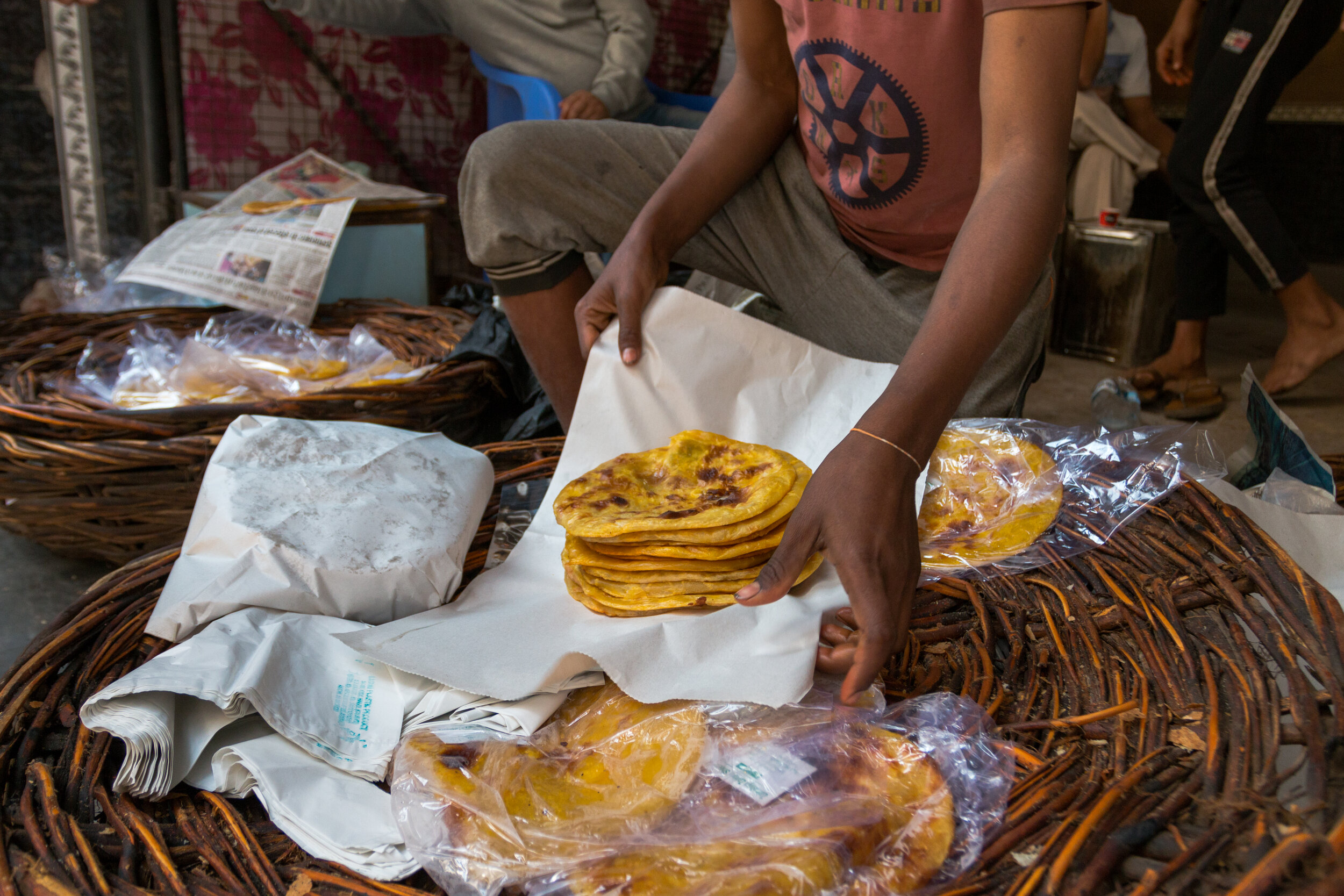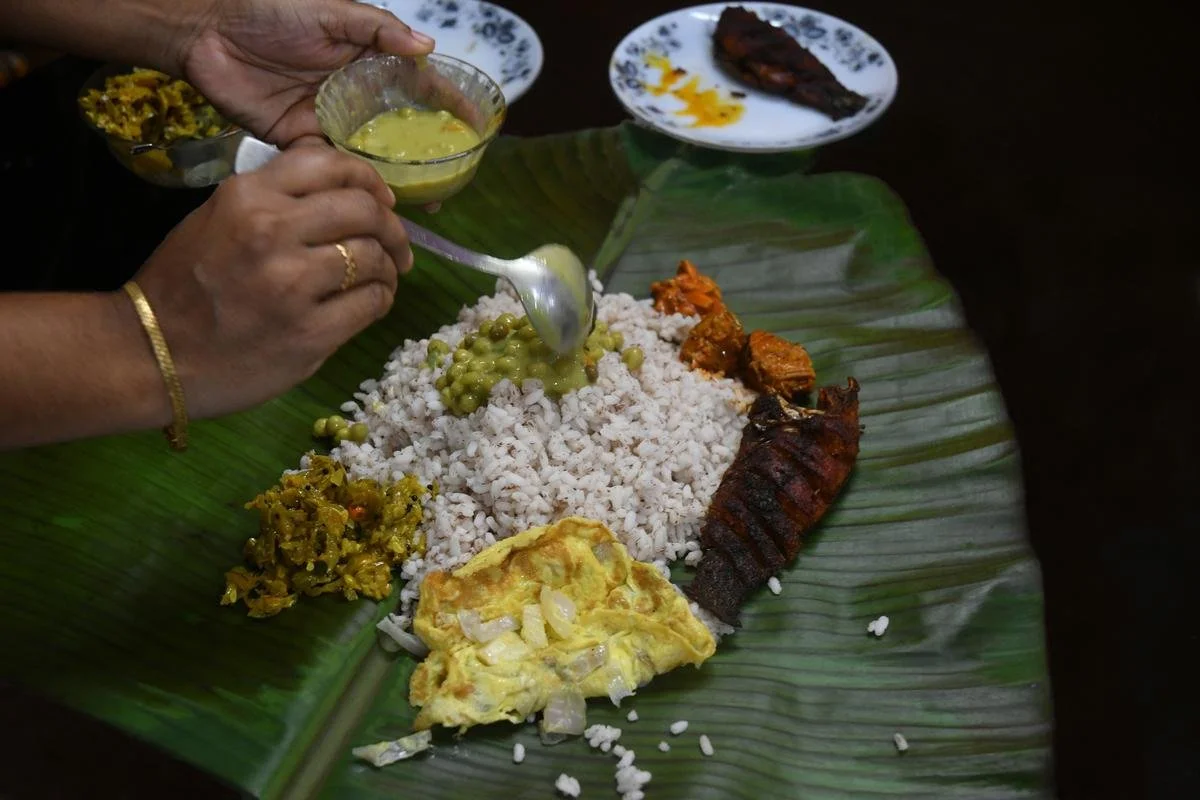Inside Lucknow's 190-year-old Sheermal Shop

Sheermal is one of the most celebrated breads in Lucknow. Taiyaba Ali visits Ali Hussain Sheermal, where the 7th generation proprietor, Mohammad Umar keeps this delicious bread, and Lucknowi heritage, alive.
Lucknow is known for a wide variety of leavened and unleavened breads. However, sheermal is probably the one that has endured the test of time, beloved by both children and elders alike. In the first half of the 1800s, Muslim bread-makers in Lucknow picked up influences from their Hindu counterparts who were using ghee to fry puris, and incorporated the same technique, which is how baqarkhani, a kind of paratha, came about.
Sheermal’s History
Muhamdu, a cook from the reign of Nawab Nasir-ud-din Haider (1827-1837), is said to have improvised on the baqarkhani to invent the sheermal, as an accompaniment to the popular breakfast dish, nihari. Maulana Abdul Halim Sharar, in his book, Guzashta Lucknow trans. Lucknow: The last phase of oriental culture, chronicles that with the end of royal patronage, Muhamdu’s successor Ali Hussain brought sheermal to Chawal wali gali in 1830. The shop still stands in its original spot, and is now run by 7th-generation proprietor, Mohammad Umar, and his family.
This photo essay is a documentation of the layered process of sheermal-making at Ali Hussain Sheermal shop, and how a shift from its original shape was brought about to meet the high demands for Lucknow’s most loved bread.
Traditionally, sheermal is made with desi ghee, saffron, cardamom, milk, kewra, itr, and plain flour. In his book, Lucknow ka Dastarkhwan (1980), Mirza Zafar Hussain writes that sheermal was also known as ‘Ameeron ki roti’ or ‘bread of the rich,’ given the indulgent ingredients that went into the preparation of the bread. And while Ali Hussain’s shop was the first to bring sheermal into Lucknow homes in 1830, it certainly isn’t the only one in the city today. Alternate versions, where milk is replaced with water, and saffron with synthetic food colour, are widely available now, to suit the pockets of all customers.
Each ingredient brings a special feature to the sheermal. Saffron contributes its distinctive yellow-orange hue, though red food colour is used in sheermals made on a budget. Milk adds to the sweetness; kewra and itr brings fragrance; and ghee is an important catalyst for achieving that signature layered texture.
The process begins by kneading the dough well ahead. According to Mohammad Umar, the secret of sheermal’s layered texture lies in the kneading of the dough. The layers reflect the mastery of the baker.
Unlike other kinds of breads, fat in the form of ghee, is poured over the dough and set to rest. Depending upon the weather, it takes between 10 and 20 minutes for the fat to seep into the dough. It is only after this step, that the dough can be portioned out for rolling.
The dough for sheermal at Ali Hussain’s is still portioned using a hand-scale called tarazu, however large the order may be. The practice of holding the scale in one hand, and using the other to cut out roundels, is passed on from old practitioners to new.
Each roundel is then flattened and pierced with a comb-like tool called choka. Choka creates a steam outlet in the sheermal, which prevents it from ballooning like other breads, and falling off in the tandoor while baking.
Finally, the nanbai flattens and shapes the dough like a disc on a round pillow-like pad called sancha, made of cotton muslin cloth, traditionally white in colour, with a filling of cane that lends a smooth, round, pillow-like shape. The pad is regularly moistened to keep the cloth from burning, while the cane inside retains moisture. The nanbai uses the sancha to stick the sheermal onto the hot walls of a burning tandoor by hand, where the sheermal bakes at about 450 degrees Celsius.
From Cheermal to Sheermal
The original sheermal roti invented by Muhamdu had another very distinctive feature. It is said that when the Nawab first ate sheermal, he loved the loop at the edge of the bread so much that he asked for it to be patented. The slit that was cleverly added to the lower edge of the dough, gave it the name cheermal. ‘Cheera’ in Urdu means a slit. But by the end of 1990s, the design was done away with, to meet increased demand during the months of Muharram and Chehlum.
Sheermal is always baked in an iron tandoor fired with coal, as opposed to a khamiri roti/naan that is baked in a clay tandoor on wood fire. Clay has the tendency to absorb the fat and fragrance from the bread, drying it out, which is not ideal for sheermal-making. The tandoor at Ali Hussain’s weighs 120 kilograms which can accommodate 35-40 sheermals at a time.
The baker sprinkles coloured water on the sheermal, for its characteristic yellow-orange colour. The colour of the sheermal is a marker of its quality. Sheermal made on a budget tends to have a darker shade of red, from food colour, while the orange tint fades to yellow, if saffron or high-quality food dyes are used.
Sheermal takes nearly 4 minutes of baking, after which the baker uses a hook called the jodi, to dislodge the sheermal from the tandoor, and pull it out to cool.
A hot-out-of-the-tandoor sheermal is never placed on top of another; it risks peeling the skin off. The bread is left to cool and dry out completely before it is sold.
On a regular day, Ali Hussain Sheermal sells nearly 1,000 sheermals, not including orders made for various events. Even today, sheermal continues to be the most popular item to distribute as majalis tabarruk in Lucknow’s Muharram Azadari. During this particular time, demand for sheermal often doubles and triples in volume. The starting price of a sheermal at Ali Hussain’s is Rs. 15, and depending upon the ingredients used, it can go upto Rs. 60, and is often made to order for special occasions.
Md. Umar, holding Zainabiya Zafrani Sheermal (left) and a regular sheermal (right). Zainabiya Zafrani Sheermal is a variety that Md. Umar introduced in 2011, to make a good quality sheermal accessible to all pockets. Priced at Rs. 20, Zainabiya Sheermal is made with a mix of seasonal dry fruits and is kneaded solely in milk.
Sheermal is typically paired with nihari, a breakfast dish. ‘Nahar’ means morning or dawn, in Arabic. At celebrations, sheermal is eaten with kebabs and qormas. The locals also love to pair it with balae/malai and milk barfi. And of course a steaming cup of hot chai.
Taiyaba Ali is a Delhi-based food writer and cook. She is passionate about food origins and blogs at Sil-Batán. Follow her food escapes on Instagram, here.
ALSO ON THE GOYA JOURNAL






















